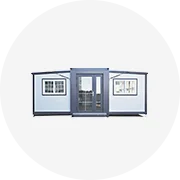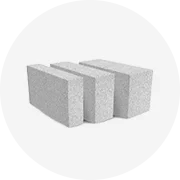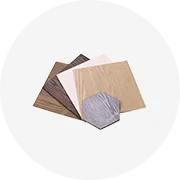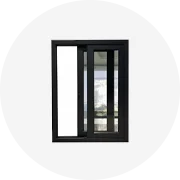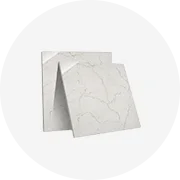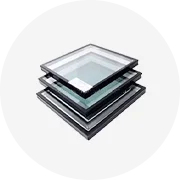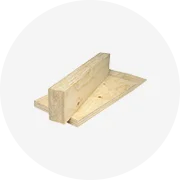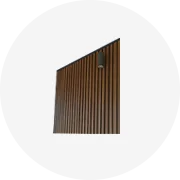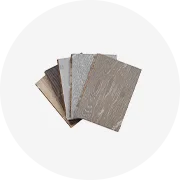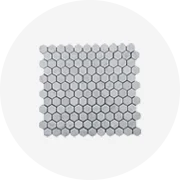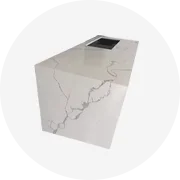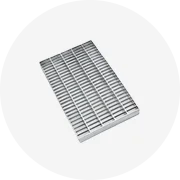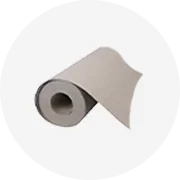Types of Cedar Front Doors
Cedar front doors offer exceptional beauty, durability, and character for your home entrance. Understanding the different types available helps you select the perfect door for your architectural style and functional needs.
Single Cedar Front Doors
The classic choice for most homes, single cedar doors provide versatility with numerous design options from traditional to contemporary styles.
- Ideal for limited entrance spaces
- Customizable with various panel designs
- Excellent balance of aesthetics and functionality
- Perfect for creating a focused entry point
Cedar Double Front Doors
Make a grand entrance statement with these impressive paired doors that create an open, welcoming atmosphere.
- Creates a dramatic, upscale entrance
- Provides wider access for moving furniture
- Available with decorative glass inserts
- Enhanced curb appeal and property value
Cedar Dutch Doors
These horizontally divided doors allow independent operation of top and bottom sections, combining charm with practical functionality.
- Perfect for farmhouse and cottage styles
- Provides ventilation while maintaining security
- Creates a unique, conversational entryway
- Adds rustic character to your home
Cedar Sliding Front Doors
Modern space-saving solution that creates a seamless transition between indoor and outdoor spaces.
- Ideal for contemporary architectural styles
- Space-efficient operation for tight entrances
- Creates a dramatic design statement
- Available in various finish options
| Door Type | Best For | Space Requirements | Style Impact | Price Range |
|---|---|---|---|---|
| Single Cedar Door | Most residential applications | Minimal; standard entryway | Versatile; suits most architectural styles | $$ |
| Double Cedar Door | Luxury homes, grand entrances | Requires wider entryway | Dramatic, elegant statement | $$$-$$$$ |
| Cedar Dutch Door | Farmhouse, cottage styles | Standard doorway | Charming, rustic character | $$-$$$ |
| Cedar Sliding Door | Modern homes, space constraints | Requires wall space adjacent to opening | Contemporary, minimalist | $$$-$$$$ |
Pro Tip: When selecting your cedar door type, consider both the architectural style of your home and the practical aspects of your entryway space. The right door should complement your home's character while providing the functionality your family needs.
Functions and Features of Cedar Front Doors
Cedar front doors offer exceptional performance characteristics that make them a premium choice for discerning homeowners. These natural wood doors combine beauty with practical benefits.
Weather Resistance
Cedar contains natural oils that provide outstanding protection against moisture, decay, and insects. This makes cedar exterior doors particularly suitable for varying climate conditions.
Key benefit: Long-term durability even in harsh environments
Thermal Insulation
Cedar has excellent natural insulating properties that help maintain comfortable indoor temperatures. Cedar doors provide superior thermal performance compared to other door materials.
Key benefit: Energy efficiency and reduced utility costs
Aesthetic Versatility
The natural beauty of cedar wood creates a warm, inviting entrance. A cedar front door with glass panels can enhance this beauty while allowing natural light into your entryway.
Key benefit: Timeless appeal that complements various architectural styles
Structural Integrity
Cedar's density and strength provide excellent security and longevity. These doors are constructed to withstand daily use while maintaining their appearance and functionality.
Key benefit: Long-term investment that maintains its value
Performance Characteristics
- Sound Insulation: Cedar doors naturally dampen sound, creating a quieter indoor environment
- Dimensional Stability: Cedar resists warping, swelling, and shrinking with temperature and humidity changes
- Customizability: Cedar can be easily carved, shaped, and finished to create unique designs
- Environmental Benefits: Sustainably harvested cedar is a renewable resource with a lower carbon footprint
Maintenance Note: To preserve the beauty and performance of your cedar front door, regular maintenance is essential. This includes cleaning, inspecting for damage, and reapplying protective finishes every 2-3 years depending on exposure. Proper maintenance will extend the life of your door and enhance its natural character over time.
Ideal Scenarios for Cedar Front Doors
Cedar front doors are versatile solutions that enhance various architectural styles and building projects. Here are key applications where cedar doors truly excel:
Suburban Home Construction
Cedar front doors are perfect for new suburban home construction and renovation projects where creating curb appeal and character is essential.
- Adds distinctive warmth to cookie-cutter neighborhoods
- Creates a memorable first impression for visitors and potential buyers
- Complements traditional architectural features in established neighborhoods
- Provides a focal point that enhances overall home design
Cabin and Chalet Renovation Projects
The natural beauty and rustic character of cedar doors make them the ideal choice for vacation properties and mountain retreats.
- Reinforces the rustic, natural aesthetic of woodland settings
- Withstands extreme temperature fluctuations in remote locations
- Complements other natural building materials like stone and timber
- Creates an authentic, harmonious connection with natural surroundings
Commercial and Office Building Construction
Cedar doors add warmth and character to commercial spaces, creating welcoming entrances for clients and visitors.
- Creates a memorable brand impression for boutique businesses
- Provides a natural contrast to contemporary commercial exteriors
- Stands up to high-traffic use in commercial settings
- Enhances the perceived value of the business space
Historic Renovation Projects
Cedar doors are excellent choices for historical renovations where authenticity and period-appropriate materials are essential.
- Can be crafted to match original architectural detailing
- Provides authentic character for heritage buildings
- Ages gracefully, developing a patina that enhances historical aesthetics
- Often acceptable for properties with historical designation requirements
How to Choose a Cedar Front Door
Selecting the perfect cedar front door involves careful consideration of several key factors to ensure it meets your aesthetic preferences, functional requirements, and environmental conditions.
Climate and Weather Considerations
Your local climate should significantly influence your cedar door selection. Different finishes and construction methods provide varying levels of protection.
- Hot, humid climates: Choose doors with UV-resistant finishes to prevent sun damage
- Cold, snowy regions: Look for doors with tight seals and proper insulation
- Coastal areas: Select doors with marine-grade finishes to resist salt spray
- Rainy environments: Ensure proper overhangs or awnings to protect the door
Architectural Compatibility
Your cedar door should complement your home's architectural style for a cohesive, harmonious appearance.
- Craftsman homes: Look for doors with simple, straight lines and exposed joinery
- Colonial styles: Consider paneled doors with symmetrical designs
- Modern homes: Sleek, minimalist cedar doors with clean lines work best
- Rustic properties: Hand-hewn textures and natural finishes enhance character
Finishing Options
The finish you choose impacts both the appearance and longevity of your cedar door.
- Clear sealants: Showcase cedar's natural color and grain pattern
- Semi-transparent stains: Add color while allowing wood grain to show through
- Solid stains: Provide more consistent color while protecting the wood
- Paint: Offers unlimited color options but hides the natural wood grain
Budget Considerations
Cedar doors range significantly in price based on construction, detailing, and size.
- Entry-level: Basic panel designs with standard hardware ($800-1,500)
- Mid-range: Custom designs with quality hardware ($1,500-3,000)
- Premium: Fully customized doors with high-end features ($3,000-5,000+)
- Investment perspective: Consider long-term value and energy savings
Selection Advice: Request wood samples before making your final decision. Cedar can vary in color from light amber to deep reddish-brown. Seeing actual samples in your home's lighting conditions will help you choose the perfect match for your exterior design scheme.
Additional Selection Factors
| Selection Factor | What to Consider | Why It Matters |
|---|---|---|
| Door Thickness | Standard (1¾") vs. Premium (2¼") | Affects insulation, sound dampening, and perceived quality |
| Hardware Quality | Hinges, handles, locks, and weatherstripping | Impacts security, operation, and long-term satisfaction |
| Installation Requirements | DIY vs. professional installation | Proper installation is critical for door performance |
| Cedar Species | Western Red Cedar vs. Northern White Cedar | Different appearance, fragrance, and weathering characteristics |
| Warranty Coverage | Length and scope of manufacturer warranty | Reflects manufacturer confidence and potential future costs |
Cedar Front Door: Questions & Answers
Cedar front doors offer numerous advantages including exceptional durability, natural resistance to rot and insects, superior insulation properties, and distinctive aesthetic appeal. Cedar contains natural oils that help it withstand harsh weather conditions, making it an excellent choice for exterior applications. Additionally, cedar doors age beautifully, developing a rich patina over time that enhances their character. They're also environmentally sustainable and can be customized in countless designs to complement any architectural style.
Proper maintenance of cedar front doors includes regular cleaning with a mild soap solution to remove dirt and debris. Avoid harsh chemicals that can damage the wood's natural oils. Inspect the door twice yearly for signs of wear or finish deterioration. Apply a fresh coat of wood protectant every 2-3 years, or more frequently in harsh environments. In areas with direct sun exposure, UV-protective finishes are recommended. Keep hardware clean and lubricated, and ensure weatherstripping remains intact to maintain energy efficiency. Promptly address any signs of water damage or finish failure to prevent more serious deterioration.
Yes, cedar front doors are remarkably versatile and complement virtually any architectural style. For traditional homes, paneled cedar doors with classic details create a timeless entrance. Contemporary homes benefit from clean-lined cedar doors with minimalist hardware. Rustic or farmhouse styles pair perfectly with distressed or hand-hewn cedar doors. Craftsman-style homes look authentic with cedar doors featuring visible joinery and straight lines. Mediterranean or Spanish homes can incorporate cedar doors with arched tops or decorative iron accents. The natural warmth of cedar wood creates a welcoming entrance regardless of your home's architectural design.
Cedar front doors provide excellent natural insulation properties. Cedar wood has cellular structures that trap air, creating natural thermal barriers that help regulate indoor temperatures. A properly installed cedar door with quality weatherstripping can significantly reduce energy loss compared to less insulative materials. For maximum energy efficiency, consider a cedar door with an insulated core, which combines the beauty of natural cedar with enhanced thermal performance. Many manufacturers offer cedar doors that meet or exceed energy code requirements. Additionally, the thickness of premium cedar doors (typically 1¾" to 2¼") further contributes to their insulative qualities.
Preventing cracks in cedar front doors requires proper preparation, installation, and maintenance. Choose a door with proper construction techniques, including floating panels that can expand and contract naturally with seasonal changes. Apply quality finishes to all surfaces—including the top, bottom, and edges—to create a complete moisture barrier. Maintain consistent indoor humidity levels to minimize dramatic wood movement. Install adequate overhangs or awnings to shield the door from direct sunlight and precipitation. Regularly inspect and renew protective finishes before they deteriorate. For doors in extremely harsh environments, consider engineered cedar construction, which provides enhanced dimensional stability.
A quality cedar front door that receives proper maintenance can last 20-30 years or more. Cedar's natural oils and resins provide inherent resistance to decay and insects, contributing to its longevity. Factors affecting lifespan include exposure to elements, quality of initial installation, consistency of maintenance, and the door's construction quality. Premium cedar doors with proper weather protection can become generational fixtures in a home, developing character and beauty with age. Many homeowners find that the patina that develops on well-maintained cedar doors enhances their appeal over time.
Expert Advice: When purchasing a cedar front door, consider working with a specialized door manufacturer rather than a big-box retailer. Specialized manufacturers typically offer higher-quality construction methods, better wood selection, and more personalized service to ensure your door meets your specific requirements and environmental conditions.



















































